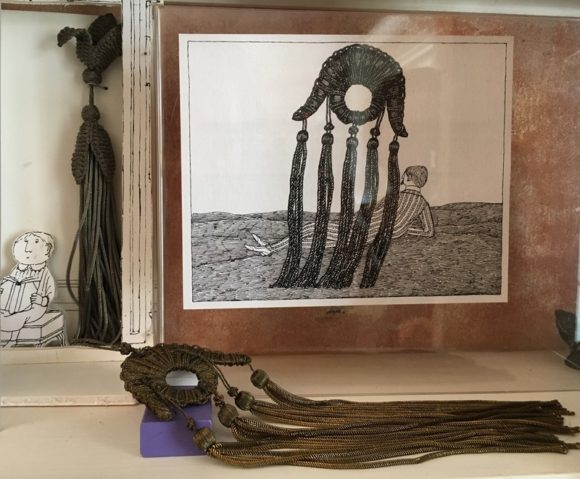“The Horrible Trimmings” — The hoard of Edward Gorey
A one-of-a-kind artist who hoarded many one-of-a-kind things.
by Cara Giaimo for Atlas Obscura,
The famous illustrator was a devoted collector of… well, almost everything.
“In 1976, Edward Gorey put out one of his trademark works of everyday dread. Called Les Passementeries Horribles, or “The Horrible Trimmings,” the book consists solely of illustrations of enormous, menacing tassels of all shapes. A velvety, tentacled clump looms over a child with a pail. A beaded braid chases a man in a wheelchair.
Twenty-four years later—just after the artist’s death—Rick Jones, the director of the Edward Gorey House in Yarmouth, Massachusetts, was poking around in the building’s garage when he found a small shoebox. He opened it up. “Bingo, it was a shoebox full of tassels,” says Gregory Hischak, the house’s curator. Now dusty and crumbling, each one corresponded with a page in the book. Gorey had held onto his inspiration, years and years after he used it.
This wasn’t unusual. When he wasn’t writing, drawing, illustrating, and designing—and even when he was—Edward Gorey was collecting. Over the course of his life, the artist gathered, and kept, everything from tarot cards to trilobites to particularly interesting cheese graters. “We ask the docents not to use the word ‘hoarder,’” says Hischak, grinning as he surveys the House’s newest exhibit, which focuses on Gorey’s pack rat tendencies. “But he really did hoard interesting things.”…
For the rest (and more pictures), click here.
Share



